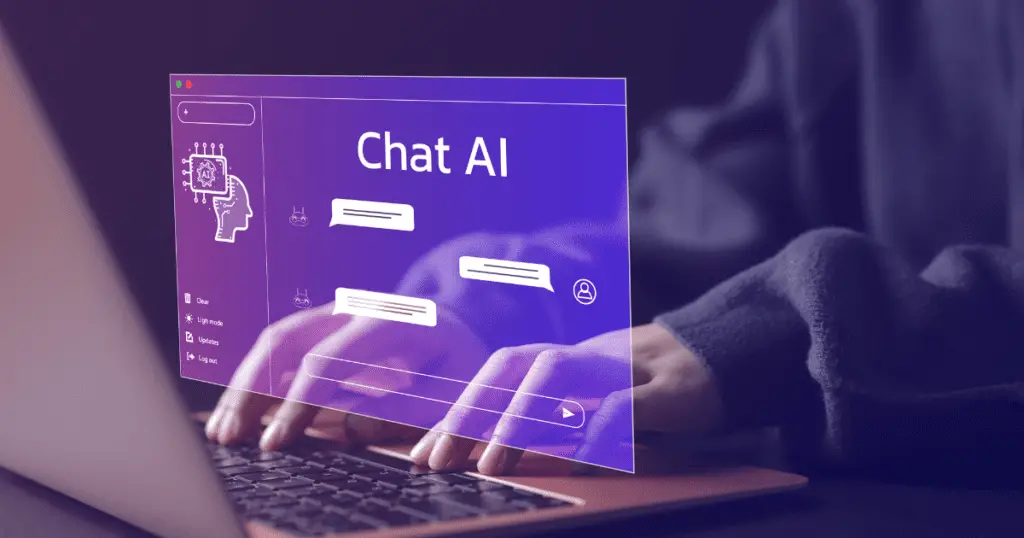Builder.ai, a leading AI-powered composable software platform, is at the forefront of this revolution, empowering businesses and entrepreneurs to seamlessly transition into the digital age.
The company recently unveiled its groundbreaking Code Generation System. It was spearheaded by Natasha, the world’s first AI product manager, who has become Product Manager & Developer Assistant.
This innovative system transforms traditional software development by automating the journey from conceptual discussions to fully functional software.
This introduction sets the stage for an in-depth exploration of Builder.ai’s latest release, illustrating how it is poised to redefine the standards of software creation, enhance operational efficiencies, and tailor solutions that align precisely with customer visions.
Natasha Code Generation System
Natasha, originally introduced as the world’s first AI product manager, has evolved significantly in her capabilities and role within Builder.ai’s ecosystem.
Now functioning as a Product Manager and Developer Assistant, Natasha is central to the new Code Generation System, designed to automate and streamline the software development process from initial conversation to final product.
Natasha starts by processing the user discussions about their business ideas and desired features. These discussions are mapped onto Builder.ai’s proprietary Knowledge Graph, which helps understand and organize the information.

Natasha formulates detailed user stories and outlines the necessary test cases from the discussions. These stories guide the development process, ensuring the software meets the specified requirements.
Natasha’s most transformative ability is her CodeGen function, where she devises an implementation plan based on user stories.
Natasha then converts this plan into functional customization code tailored to the project’s specific needs.
The generated code is seamlessly integrated with Builder.ai’s modular building blocks, akin to Lego pieces, which are pre-designed elements that can be combined to create complex systems.
Within Builder.ai’s Assembly system, the code undergoes autonomous testing, during which Natasha identifies and corrects errors without human intervention.
The system is set to expand further by incorporating Builder.ai’s computer vision QA system. This advanced system will detect UI defects across various virtual devices and automatically correct them, ensuring high-quality user interfaces.
Through these capabilities, Natasha enhances the efficiency of the software development process and ensures that the final products are robust, fully functional, and closely aligned with the customers’ requirements.
Integrating these advanced AI-driven processes marks a significant leap towards more intelligent, responsive, and user-focused software development practices.
Key Features
The Code Generation System introduced by Builder.ai, powered by the AI assistant Natasha, incorporates several key features designed to significantly enhance the software development process.
These features streamline development and introduce a level of precision and automation previously unattainable.
Natasha’s generated code is integrated into Builder.ai’s platform, which utilizes modular, Lego-like building blocks. This allows for rapid assembly of complex applications from pre-existing, tested components, significantly reducing development time and increasing reliability.
One of the standout features of the system is its ability to autonomously test the assembled code within the Builder.ai Assembly system. Natasha automatically detects and corrects errors, facilitating a more efficient debugging process that ensures higher code quality and functionality.
The system is poised for further enhancement by incorporating a computer vision QA system. This addition will enable the platform to automatically detect UI defects across numerous virtual devices and make corrections as needed.
This ensures that the applications function well and offer a seamless user experience across different platforms and devices.
Natasha employs advanced generative AI techniques to interpret customer discussions and translate them into actionable development plans. This involves creating user stories, mapping feature sets, and generating the necessary code derived from natural language inputs.
Beyond initial development, Natasha continues to support the product lifecycle by allowing for iterations as required by the client. This ongoing support ensures that applications can evolve in response to user feedback or changing market conditions without extensive redevelopment.
The system reduces the labor-intensive aspects of code creation and testing by automating significant portions of the software development process.
This not only lowers the cost of software development but also accelerates the time to market for new applications, providing businesses with a competitive edge.
The modular nature of Builder.ai’s building blocks, combined with Natasha’s AI-driven customization capabilities, allows for scalable solutions tailored to meet specific business needs. This flexibility is crucial for businesses looking to adapt quickly in dynamic markets.
Benefits in Software Development
Incorporating Generative AI, as exemplified by Builder.ai’s Natasha and the Code Generation System, brings transformative benefits to the software development industry.
These advantages address some of the longstanding challenges in the field, making the development process faster, more efficient, and adaptable to individual business needs.
Generative AI automates numerous aspects of software development, from understanding user requirements and generating user stories to writing and testing code.
This reduces the human effort required for repetitive or complex tasks, allowing developers to focus on more strategic aspects of product development.
By processing natural language inputs and converting them into detailed development plans, Generative AI ensures that the final software product closely aligns with the customer’s vision.
This capability significantly reduces errors and revisions by accurately capturing and implementing user requirements.
Automating the code generation and testing phases slashes the time required to develop software. This rapid development cycle accelerates time-to-market and reduces the labor costs associated with manual coding and testing, offering a substantial economic benefit.
Generative AI systems can scale more effectively than traditional development teams because they can generate and adapt code based on changing requirements without additional human input.
This scalability makes it easier for businesses to expand or alter their software as they grow or as market demands shift.
AI-driven systems like Natasha can continue to learn from new data, improving their ability to understand user requirements and anticipate potential issues.
This capability ensures that the software can be iteratively improved post-launch, maintaining its effectiveness and relevance.
With the integration of advanced testing protocols, such as the forthcoming computer vision QA system, Generative AI ensures that software performs well across multiple platforms and devices.
This thorough testing guarantees a consistent and reliable user experience, which is critical in today’s diverse tech environment.
For businesses undergoing digital transformation, Generative AI can be a game changer. It enables even non-tech-savvy users to articulate their needs and see them transformed into working software, democratizing access to technology solutions across various industries.
By generating and testing code automatically, Generative AI reduces the risk of human error and the associated costs of fixing bugs. This proactive approach to quality assurance helps prevent issues from reaching the end-user, safeguarding the business’s reputation and user satisfaction.
Generative AI in software development streamlines production processes and enhances the overall quality and adaptability of software solutions, driving innovation and efficiency in an increasingly digital world.
Impact on the Software Industry
The introduction of Generative AI, like Builder.ai’s Natasha and the Code Generation System, is poised to profoundly impact the software development industry.
These technologies are redefining traditional development processes, affecting everything from the role of human developers to the speed and quality of product delivery.
As Generative AI takes over more repetitive and routine coding tasks, human developers’ roles are shifting towards more complex, creative, and strategic aspects of software development.
Developers can focus on designing innovative features, solving unique problems, and improving user experiences rather than coding basics.
Generative AI significantly reduces the time required from concept to completion by automating the coding and testing phases. This acceleration enables businesses to respond more quickly to market changes and customer needs, offering a competitive advantage in rapidly evolving industries.
AI’s ability to learn from data and adapt to new inputs makes software development more flexible and customizable. This adaptability allows for the creation of software that is more closely aligned with specific user requirements. It can quickly scale as those needs change.
By simplifying the software development process, Generative AI makes technology more accessible to non-technical entrepreneurs and small businesses. This democratization allows a broader range of people to develop custom software solutions, potentially spurring innovation across various sectors.

Automated testing and error correction lead to higher-quality and more reliable software products. Generative AI can detect and fix bugs more efficiently than human testers, reducing the likelihood of errors persisting in the final product.
Automating significant portions of the software development process reduces labor costs and the expenses associated with prolonged development timelines. These savings can be substantial, particularly for complex projects requiring continuous updates and maintenance.
Generative AI is crucial for businesses undergoing digital transformation. It provides the tools necessary to seamlessly transition traditional operations to digital platforms. This capability is precious in industries that have needed digital technologies.
Despite its many benefits, the rise of Generative AI in software development also poses challenges, including ethical considerations around job displacement, privacy concerns related to data usage, and the potential for creating biased systems if not properly managed.
As AI technology advances, its integration into software development is expected to deepen, leading to more sophisticated and autonomous systems. This progression will likely spur further innovation and redefine software development practices entirely.
The impact of Generative AI on the software development industry is transformative, offering both opportunities and challenges that will shape the future of how software is conceived, developed, and maintained.
Future Directions
The advent of Generative AI in software development, as demonstrated by Builder.ai’s Natasha and the Code Generation System, marks a pivotal shift in how software is created, tested, and maintained.
The industry’s reaction has been largely positive, recognizing the potential of such technologies to revolutionize traditional practices. Here’s an overview of the anticipated future directions for Generative AI in software development and the industry’s response to these changes:
The future will likely see even deeper AI integration into all stages of the software development lifecycle.
This could include more advanced capabilities in understanding natural language, predicting user needs before they are explicitly expressed, and proactive problem-solving throughout development.
AI will play a crucial role in enhancing collaboration among distributed development teams, offering tools that seamlessly integrate contributions from various stakeholders and synchronize across multiple platforms and time zones.
Beyond coding, AI is expected to contribute to design and user experience, using data-driven insights to optimize interfaces and interactions based on user behavior and preferences.
As AI lowers the barrier to software development, new markets could emerge, particularly in regions or sectors that currently lack the technical expertise to develop custom software solutions. This could foster more significant global digital equity.
With AI becoming a central part of software development, there will be an increased focus on developing regulatory frameworks and ethical guidelines to ensure these technologies are used responsibly and inclusively.
There’s a significant amount of enthusiasm within the industry for the potential of AI to increase productivity, reduce costs, and enhance the quality of software products. Companies recognize the competitive advantage provided by faster and more efficient development cycles.
While there’s excitement about the potential of AI, there’s also concern about its impact on employment within the software development industry. There’s a growing need for re-skilling and up-skilling programs to ensure human workers can collaborate effectively with AI technologies.
Many within the industry advocate for a balanced approach to AI development, emphasizing that AI should augment human abilities rather than replace them. This involves designing AI systems that enhance human developers’ creativity and problem-solving capabilities.
Organizations increasingly invest in change management strategies to help their workforce adapt to AI-driven workflows. There’s a recognition that successful implementation of AI technologies requires not just technical changes but also adjustments in culture and processes.
The industry is optimistic about AI’s future role in software development. Leaders look forward to AI’s ability to tackle more complex tasks and help address pressing challenges such as software security, scalability, and personalization.
Final Thoughts
The integration of Generative AI into software development, exemplified by Builder.ai’s introduction of Natasha and the Code Generation System, represents a significant turning point in the industry.
This technological advancement not only enhances the efficiency and accuracy of software development but also democratizes access to customized software solutions, enabling businesses of all sizes and sectors to participate in the digital economy.
The potential of AI to streamline and optimize every phase of the development process—from initial concept to deployment and beyond—cannot be overstated.
It promises to reduce development times dramatically, cut costs, and deliver superior products that more closely align with customer expectations and needs.
The continuous learning and adaptation capabilities of AI systems like Natasha ensure that software can evolve in response to user feedback and changing market conditions, thereby maintaining relevance and effectiveness over time.
As the industry embraces these advanced AI capabilities, it also faces challenges, including ethical considerations, the need for new skills, and the potential impact on employment within the sector.
It is imperative for businesses and developers to engage with these challenges proactively, fostering an environment where AI augments human expertise and creativity rather than replacing it.
Looking ahead, the ongoing development and refinement of AI technologies are set to further revolutionize software development, driving innovation and efficiency.
As companies continue to explore and expand the possibilities of AI, the software development industry is poised for unprecedented growth and transformation.


